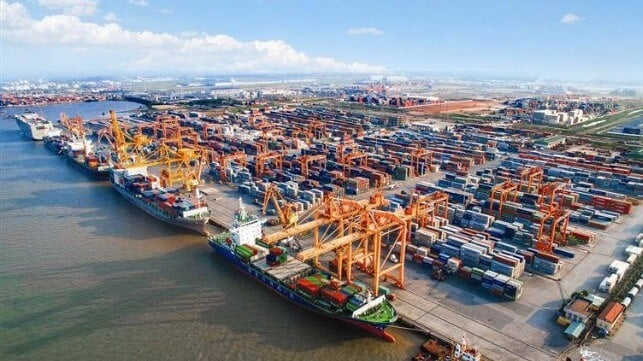CMA CGM to Invest $600 Million to Build Northern Vietnam Terminal

As part of its efforts to expand its global terminal operations in strategic ports, CMA CGM Group reports it has entered into a public-private partnership to develop its first terminal in northern Vietnam. The group calls it a strategic investment to support the region’s strong industrial and logistics growth.
CMA CGM highlights it has been active in Vietnam since 1989 and today operates 29 weekly services from seven ports in the country. It is co-owner of the Gemalink terminal in Cai Mep, in southern Vietnam near Ho Chi Minh City, and the Vietnam International Container Terminal in Ho Chi Minh City.
The group has signed a partnership agreement with Saigon Newport Corporation to develop a new deep-water terminal in Hai Phone in northern Vietnam. A French colonial port dating to 1874, Hai Pong is near the northern border with China and one of the areas Vietnam is investing in for industrial and manufacturing development.
The agreement encompasses the design, construction, and operation of the Lach Huyen terminals 7 and 8, located in the strategically positioned Lach Huyen area in Hai Phong. The terminal will have a capacity of 1.9 million TEUs and is scheduled to open in 2028. CMA CGM reports it represents a total investment of $600 million.
The company says the project is designed to meet the sharp increase in container volumes in northern Vietnam—one of Southeast Asia’s fastest-growing economic zones. This partnership will enable CMA CGM to secure long-term capacity in a region that has become central to Asian supply chains due to its rapid industrial and logistics development.
The Port of Hai Phong celebrated last month the opening of Berth 4 with space for a containership and a barge. Six years after announcing the project, the facilities are now authorized to receive both domestic and international vessels for cargo handling and other related maritime services. Berth No.4 is 375 meters (1,230 feet) in length and is capable of accommodating fully loaded container vessels up to 100,000 dwt or approximately 8,000 TEUs, while the Barge Wharf is 150 meters (492 feet) in length and perpendicular to the container berth to handle barges with a capacity of up to 160 TEUs. The Service Wharf is 50 meters (164 feet) long and used for tugboats. It joins Berth 3 in expanding the port’s capacity.
Vietnam is working to expand its global exports. The government has been working on a trade deal with the Trump administration as it positions to benefit from the U.S.’s efforts to move away from Chinese imports.
